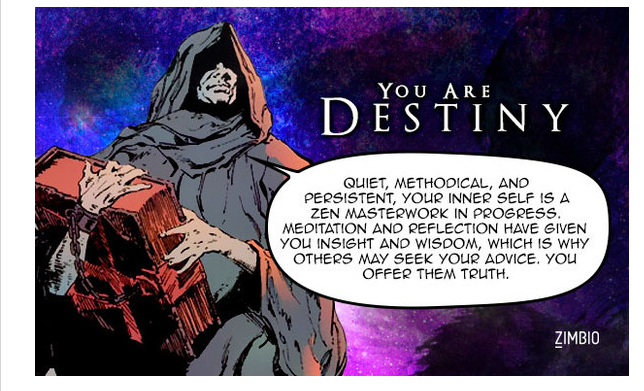Hits, misses, and breaks with
Filipino comic book great Steve Gan
by rick olivares
As the credits rolled up following the screening of the feature
film of Guardians of the Galaxy, Steve Gan’s sister-in-law gushed, “There’s
your name!”
However, Gan, missed seeing his name where he was credited along
with Steve Englehart for creating Star-Lord, that hitherto nondescript 1970’s
cosmic hero by Marvel Comics that was now taking the world not to mention comic
fandom by storm.
Gan, now at 69 years of age laughed at the way things have played
out. Sitting inside Comic Odyssey in Fullybooked, Promenade, Greenhills, he
surveyed the thousands of full-colored comics on the racks and in the bins. There
are now dozens and dozens of Filipinos plying their trade in the American comic
book scene as well as the local industry where these creators have attained
superstar status. “I missed out on that too,” quipped Gan.
“At that time we came in, even if you say there was a Filipino
invasion of American comics in the 1970s, no one knew about it,” he related of
those salad days.
After the late Tony DeZuniga invited then DC Comics officials Joe
Orlando and Carmine Infantino to check out the local artists, a press
conference was held at the National Press Club. Yet only a few local artists --
Alfredo Alcala, Gerry Talaoc, and Rudy Nebres to name a few -- were recruited
as they had few slots available to draw for DC. When some of those artists
jumped ship to Marvel, the opportunity arose for Gan to join them.
“We were mostly given the black and white magazines to draw or were
asked to ink other people’s works,” narrated Gan. “Only later were we given a
chance to do full art. And I was lucky to be given that chance too. I went to
the United States one time but got very little work from both DC and Marvel –
some issues here and there, a few pin-ups. After that, I felt that I was done
and went back home to do Filipino komiks.”
At the time of that “invasion,” the Philippines was completely
unaware of what these men were accomplishing but it did influence some of he
next generation of Filipino artists such as Whilce Portacio and Gerry
Alanguilan. Portacio swears by Nebres’ work as a massive influence on his
decision to draw comics for a living.
While less splashy than the super-hero themed American comics that
were all the rage, the locally produced komiks that dwelt on horror, romance,
adventure, or even western stories were selling at the very least 100,000
copies per issue. Publishing houses were putting out dozens of titles a week
and sometimes, even twice a week to cope with the demand.
“For me, drawing American comics was a job (where they were paid in
the beginning $20 per page),” confided Gan. “My heart wasn’t into it. I will
not deny it was a huge opportunity but when it came to drawing the local
komiks, I poured my heart into my work.”
Gan celebrated his return to the local scene by co-creating a
second iconic character, “Ang Panday” with Carlo J. Caparas. “FPJ (the late
actor Fernando Poe Jr.) also had a lot to do with how the character looked,”
admitted Gan. “He provided input on how the character should look since he was
going to portray him in a movie.”
Today, the retired Gan admits to being happy to see his name and
his accomplishments revived and recognized. Marvel recently paid him some
money for his royalties earned from the Guardians of the Galaxy film. As he
awaits royalties from the comic reprints, video games, and licensing, Gan
wishes that the Philippines caught up more with the Western countries in terms
of creators rights of which he has not seen a centavo for his efforts for “Ang
Panday.”
“Hopefully,” he said in the vernacular. “I will see some of it in
my lifetime.”
While watching the Guardians of the Galaxy film, Gan was engulfed
with mixed feelings. “It’s different,” he remarked watching actor Chris Pratt
Star-Lord. “The backstory is different. So is the costume. He isn’t what Steve
(Englehart who co-created the character and first wrote of his adventures) and
I envisioned. But I guess I should thank those who revived him for a new
generation because now I am getting some credit for my work. Make no mistake of
it, I am proud of what I did for Marvel and DC. I read Spider-Man as a kid.
Loved his adventures. When I drew for them, I was thrilled although But I felt
I never got a full break. But things have somewhat worked out in the end.”
Today, Gan has a stack of art commissions on his table. It has been
years since he drew professionally and he has to re-learn his craft (he noted
that the style, techniques, and paneling are much different today from his
time). At the time of the Guardians screenings, he was invited to a number of
comic book specialty store guestings where he signed for fans and posed for
photos.
As Gan, wrapped up the interview, he posed for some photos and
signed some comics from Conan the Barbarian to Skull the Slayer. Did he ever
miss this?
“Not at all,” he laughed. “After all I never experienced this
before.”








